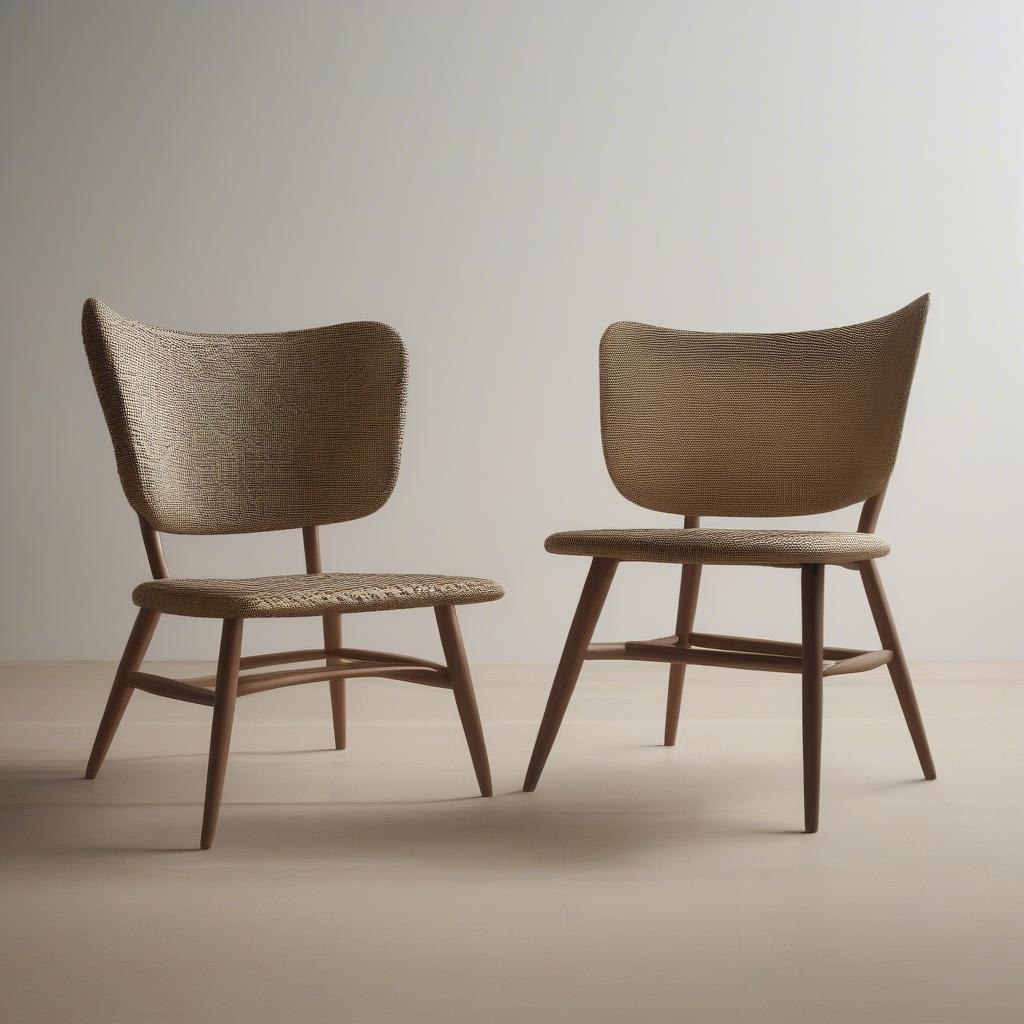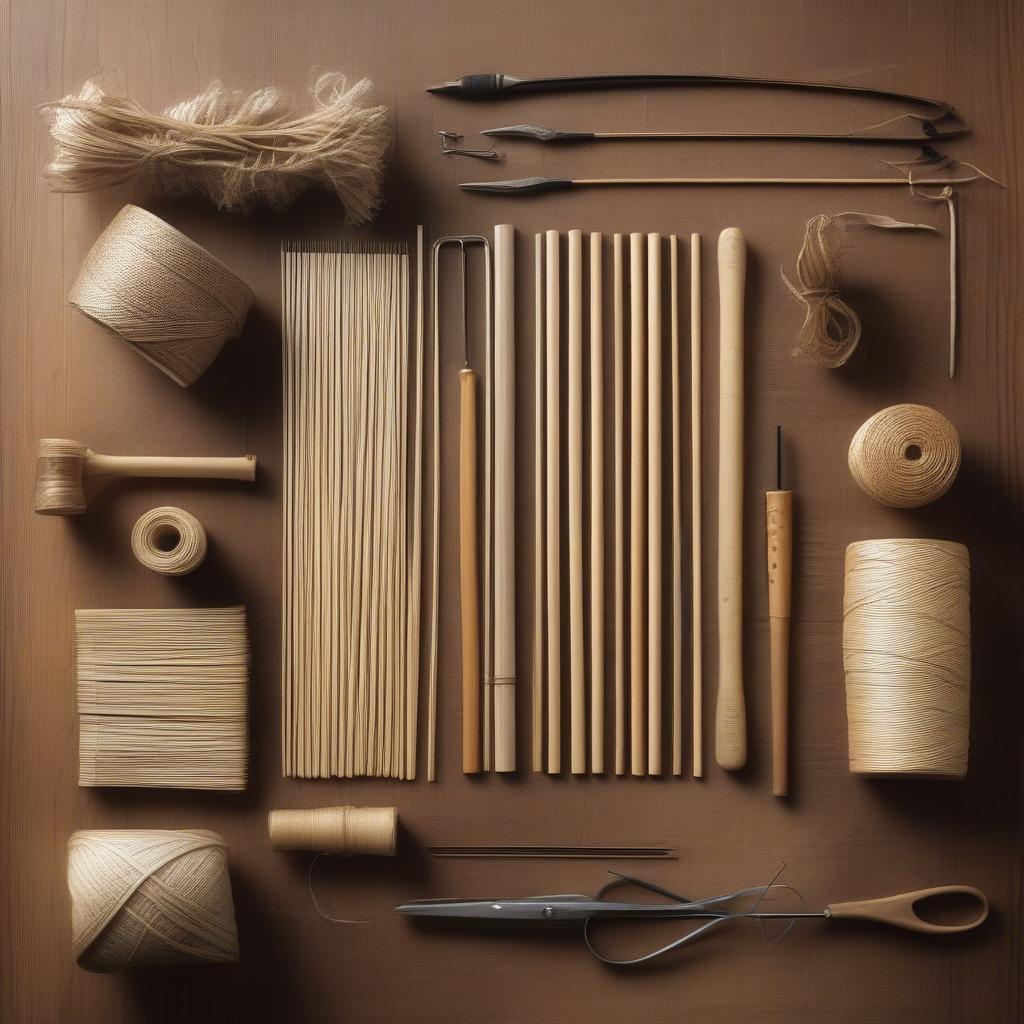Weave Chair
Chair Weaving Patterns: A Comprehensive Guide
Chair Weaving Patterns are a fascinating blend of artistry and practicality. Whether you’re looking to restore a cherished heirloom, add a unique touch to your furniture, or simply explore a new craft, understanding these patterns opens up a world of creative possibilities. We’ll delve into various types of chair weaving patterns, from traditional to contemporary, and provide valuable insights for both beginners and seasoned weavers. See our page on weaver accent chair for some inspiration!
Exploring Different Chair Weaving Patterns
There are a plethora of chair weaving patterns, each offering a distinct aesthetic and level of complexity. Some popular patterns include:
- Checkerboard: This classic pattern creates a visually appealing checkerboard effect, ideal for beginners.
- Basketweave: A timeless and versatile pattern resembling a woven basket, offering both strength and style.
- Herringbone: This V-shaped pattern adds a touch of elegance and sophistication to any chair.
- Ladderback: Known for its simple yet sturdy construction, the ladderback pattern is often used for rustic and traditional chairs.
- Danish Cord: Using a continuous length of cord, this technique creates a comfortable and supportive seat.
Each pattern requires specific materials and techniques, adding to the richness and diversity of chair weaving.
 Chair Weaving Patterns: Checkerboard and Basketweave
Chair Weaving Patterns: Checkerboard and Basketweave
Mastering the Art of Chair Weaving: Materials and Tools
Before diving into the weaving process, it’s essential to gather the right materials and tools. These include:
- Weaving Material: Choose from various materials like reed, rattan, seagrass, or synthetic fibers depending on the desired look and durability. For outdoor chairs, weather-resistant materials are recommended. Consider our page on outdoor chair seat weaving material for more options.
- Frame: A sturdy chair frame is crucial, ensuring the stability and longevity of your woven seat.
- Tools: Essential tools include a mallet, awl, measuring tape, scissors, and pliers.
Having the right tools at your disposal will make the weaving process smoother and more enjoyable.
A Step-by-Step Guide to Chair Weaving
While each pattern has its unique instructions, here’s a general guide to get you started:
- Prepare the Frame: Ensure the chair frame is clean and free of any loose pieces. For information on replacing worn-out weaves, see our guide on patio chair weave replacement.
- Measure and Cut: Measure the required lengths of weaving material, allowing extra for wrapping and securing.
- Weaving the Pattern: Follow the specific instructions for your chosen chair weaving pattern, meticulously weaving the material through the frame.
- Securing the Ends: Tuck and secure the loose ends of the weaving material, ensuring a neat and finished look.
Practice and patience are key to achieving a professional-looking woven seat.
 Essential Tools and Materials for Chair Weaving
Essential Tools and Materials for Chair Weaving
Choosing the Right Chair Weaving Patterns for Your Style
Choosing the right chair weaving patterns depends on several factors, including your personal style, the chair’s design, and the intended use. For example, a lawn chair weave might be different from a dining chair.
- Traditional Interiors: Classic patterns like basketweave or herringbone complement traditional interiors beautifully.
- Modern Spaces: Contemporary patterns and bolder materials create a statement in modern settings.
- Outdoor Furniture: Durable and weather-resistant materials are crucial for outdoor chair weaving.
“Choosing the right weaving pattern can transform a simple chair into a work of art,” says renowned furniture designer, Amelia Craftwood. “It’s about finding the perfect balance between form and function.”
Chair Weaving: A Timeless Craft
Chair weaving is more than just a craft; it’s a tradition that connects us to the past while allowing us to express our creativity in the present. With countless patterns to explore and endless possibilities for customization, chair weaving offers a rewarding experience for anyone seeking to enhance their home with handcrafted beauty.
 A Woven Chair in a Modern Setting
A Woven Chair in a Modern Setting
Conclusion
Chair weaving patterns offer a fascinating way to personalize your furniture and create unique pieces with character. From traditional designs to modern interpretations, exploring these patterns opens a world of creative possibilities. By understanding the various materials, tools, and techniques involved, you can transform a simple chair into a beautiful and functional work of art. If you’re interested in intricate weaving details, explore chairs with weaving on the joints at chair with weaving on the joints.
FAQ
-
What is the easiest chair weaving pattern for beginners?
The checkerboard pattern is a great starting point for beginners. -
What materials are best for outdoor chair weaving?
Synthetic materials and weather-resistant natural fibers like HDPE and Viro are ideal for outdoor use. -
How long does it take to weave a chair seat?
The time varies depending on the complexity of the pattern and the weaver’s experience, ranging from a few hours to several days. -
Where can I find chair weaving supplies?
Craft stores, online retailers, and specialized weaving supply stores offer a variety of materials and tools. -
Can I repair a damaged woven chair seat?
Yes, you can often repair damaged sections by replacing the worn-out weaving material. -
What are some advanced chair weaving patterns?
Advanced patterns include intricate designs like the starburst, the diamond, and the fan. -
How do I choose the right weaving material for my chair?
Consider the chair’s style, intended use, and your personal preferences when selecting a weaving material.
Need More Help?
Explore other helpful articles on our website for more in-depth information on specific weaving techniques and materials. You might also be interested in learning about:
- Repairing antique woven chairs
- Weaving with different materials like wicker and rattan
- Choosing the right weaving pattern for your home decor
Need assistance? Contact our 24/7 customer service hotline at +84 388 951 999, visit our office in Hanoi, Vietnam, or reach us at Tech Avenue, Suite 12, San Francisco, CA 94105, USA.
